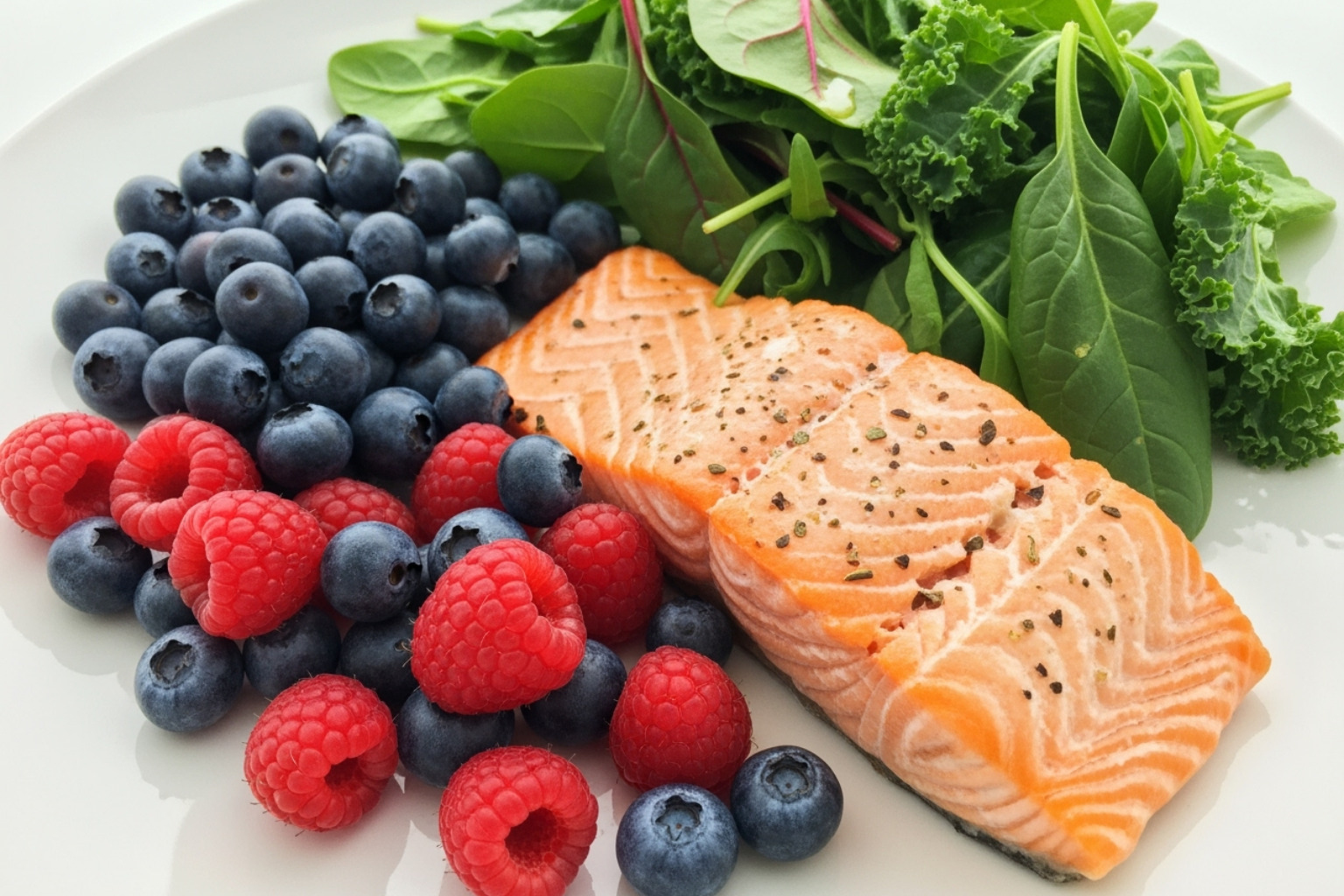Living with Widespread Pain: Understanding Your Natural Relief Options
Fibromyalgia natural pain relief is possible with a holistic approach that includes dietary changes, supplements, gentle exercise, and targeted topical treatments. Research shows these natural strategies can be highly effective:
- Exercise: Low-impact activities like walking, swimming, and tai chi can reduce pain.
- Supplements: Magnesium, Vitamin D, Omega-3s, and CoQ10 (300mg daily) may ease symptoms.
- Dietary Changes: Anti-inflammatory and gluten-free diets can reduce inflammation.
- Herbal Remedies: Ginseng, valerian root, and capsaicin may provide measurable relief.
- Topical Creams: Menthol-based formulas and essential oils target pain directly.
- Mind-Body Practices: Yoga, meditation, and stress management can lower pain perception.
Fibromyalgia is a chronic condition defined by widespread musculoskeletal pain, often a constant dull ache lasting at least three months. It affects millions of people, with women being more susceptible. Beyond pain, it causes debilitating fatigue, sleep disturbances, and cognitive issues known as "fibro fog." Anxiety, depression, and tension headaches are also common.
Conventional treatments like prescription medications can help, but often come with side effects like dizziness, weight gain, and drowsiness. This has led to a surge in interest in natural remedies, with about 90% of people with fibromyalgia trying some form of natural treatment. Studies increasingly support this, showing that exercise, supplements, and dietary changes can provide significant relief with fewer side effects.

I'm Tony Enrico, and through my work with Neuropasil, I've seen how combining natural remedies—especially topical creams with ingredients like menthol and aloe—with lifestyle changes creates a powerful path to managing this complex condition. My experience developing advanced pain relief formulations has helped thousands find effective fibromyalgia natural pain relief.
Learn more about fibromyalgia natural pain relief:
Nourish Your Body: Diet and Supplements for Fibromyalgia

Food can be powerful medicine for fibromyalgia. While no single diet is a cure-all, many people find relief by making thoughtful nutritional changes. An anti-inflammatory diet is a great starting point, focusing on whole, unprocessed foods like colorful vegetables, fresh fruits, lean proteins, and healthy fats to calm your body's inflammatory responses.
Some people also benefit from a low-fat diet or a gluten-free approach. Identifying personal food sensitivities can be a game-changer, as you may find that common triggers like dairy or nightshade vegetables worsen your pain. It's also wise to eliminate excitotoxins like MSG and aspartame, often found in processed foods, as they can aggravate neurological symptoms and "fibro fog." Finally, proper hydration is crucial; drinking at least eight glasses of water daily helps flush toxins and can reduce pain severity.
Vitamins and Supplements for Fibromyalgia Natural Pain Relief
Supplements can fill nutritional gaps and support your body's healing processes. Always consult your healthcare provider before starting a new supplement to ensure safety and proper dosage.
Vitamin D is often low in people with fibromyalgia, and research suggests that supplementation can reduce pain intensity. It also supports bone health and mood.
Magnesium acts as a natural muscle relaxer, helping to ease painful muscle spasms, improve sleep, and reduce overall pain. Many with fibromyalgia are deficient in this vital mineral.
Omega-3 fatty acids, found in fish oil, are potent inflammation fighters. A 2022 study highlighted their antioxidative effects, which can help reduce widespread pain and morning stiffness.
Melatonin can help regulate sleep cycles, as people with fibromyalgia often have lower levels of this hormone. Studies suggest it can improve sleep quality and reduce fatigue.
Co-enzyme Q10 (CoQ10) is an antioxidant crucial for cellular energy. Studies have shown that 300 mg of CoQ10 daily can significantly ease fatigue and pain.
SAMe (S-adenosyl-L-methionine) is a compound that supports both mood and pain management. Research indicates it can reduce pain, fatigue, and stiffness while improving mood.
Key Supplements and Their Functions:
- Vitamin D: Reduces pain intensity, supports mood.
- Magnesium: Relieves muscle spasms, improves sleep.
- Omega-3 fatty acids: Fights inflammation, reduces stiffness.
- Melatonin: Regulates sleep cycles, reduces fatigue.
- CoQ10: Boosts cellular energy, reduces fatigue and pain (300mg daily).
- SAMe: Decreases pain and fatigue, lifts mood.
Supplements are powerful additions to a comprehensive plan that includes a healthy diet, gentle exercise, and collaboration with your healthcare team.
Using Nature: Herbal and Plant-Based Fibromyalgia Natural Pain Relief
Herbal remedies offer a time-tested approach to fibromyalgia natural pain relief. However, "natural" doesn't always mean safe for everyone. Plants contain powerful compounds that can interact with medications or cause side effects. It is essential to consult with a healthcare provider or qualified herbalist before adding any new herbs to your routine to create a safe and effective plan.

Promising Herbal Remedies
Ginseng is an adaptogen that helps the body manage stress. A 2013 trial found it reduced tender points and improved quality of life in fibromyalgia patients. A 2021 pilot study showed that 60% of participants improved when taking HRG80 red ginseng, reporting they felt 67% better on average.
St. John's Wort is well-established for treating mild to moderate depression, which often co-occurs with fibromyalgia. Improving your mood can positively impact pain perception. Be cautious, as it can interact dangerously with prescription antidepressants.
Valerian root is a gentle herbal sedative that can help you fall asleep faster and sleep more soundly. Better sleep reduces fatigue and can improve pain tolerance during the day.
Passionflower is similar to valerian but is especially helpful for anxiety-related tension and sleeplessness. It calms the nervous system, helping to break the cycle where stress and anxiety worsen fibromyalgia symptoms.
Capsaicin, derived from chili peppers, is applied topically to painful areas. It works by depleting Substance P, a neurotransmitter that sends pain signals to the brain, providing localized relief.
| Herbal Remedy | Primary Use (Pain, Sleep, Mood) | Common Forms (Tea, Capsule, Tincture) |
|---|---|---|
| Ginseng | Pain, energy, quality of life | Capsule, extract, chewable tablets |
| St. John's Wort | Mood (depression) | Capsule, tea, tincture |
| Valerian Root | Sleep, anxiety | Capsule, tea, tincture |
| Passionflower | Anxiety, sleep | Capsule, tea, tincture |
| Capsaicin | Localized pain | Topical cream/ointment |
Finding the right plant-based remedies for your body may take time. With patience and professional guidance, herbs can become valuable allies in your journey toward fibromyalgia natural pain relief.
Movement as Medicine: Physical Therapy and Exercise
When everything hurts, the idea of exercise can seem counterintuitive. However, gentle, consistent movement is one of the most powerful tools for fibromyalgia natural pain relief. The key is to start slowly and listen to your body, abandoning the "no pain, no gain" mindset. As researcher Dr. Winfried Hauser states, "Aerobic exercise is the most effective weapon we have." A 2017 review confirmed that aerobic exercise improves quality of life, physical function, and reduces pain, fatigue, and stiffness.

The Role of Physical Therapy
A physical therapist can be a crucial partner, acting as a movement coach who understands chronic pain. They design personalized exercise plans custom to your specific needs and limitations. Physical therapy focuses on stretching techniques to improve flexibility, posture correction to minimize daily strain, and pain-relief modalities like heat or cold therapy. Some therapists also use manual therapy to release specific areas of tension.
Recommended Low-Impact Exercises
The best exercise is the one you'll do consistently. The European League Against Rheumatism found strong evidence for both aerobic and strengthening exercises.
- Walking: It's free, accessible, and effective. Start with just a few minutes and gradually increase your time.
- Swimming and water aerobics: The water's buoyancy supports your body, reducing stress on painful joints while providing gentle resistance.
- Yoga: Combining postures, breathing, and meditation, yoga can ease symptoms and improve coping skills. Studies show it can lessen pain and improve sleep.
- Tai Chi: This practice of slow, flowing movements has shown impressive results. A 2018 study found it produced similar or greater improvement in symptoms than aerobic exercise.
- Cycling: A stationary or outdoor bike offers a great cardiovascular workout without the high impact of running.
- Strength training: Using light weights or resistance bands builds muscle to support your joints and reduce overall pain.
Incorporate gentle stretches into your day to ease tension in common tender points. Try neck rolls, shoulder shrugs, the cat-cow stretch, and knee-to-chest stretches. Even wall push-ups can provide gentle strengthening. The goal is consistency and self-compassion, not perfection. Listen to your body, respect your limits, and celebrate every step forward.
Soothing from the Outside In: Topical Creams and Aromatherapy
Sometimes, the most direct path to relief is applying it right where it hurts. Topical treatments and aromatherapy offer targeted comfort for fibromyalgia's tender, aching spots without the systemic side effects of oral medications. By bypassing the digestive system, muscle pain relief cream and nerve pain relief cream deliver active ingredients directly to the source of your discomfort.
Using Essential Oils for Fibromyalgia Natural Pain Relief
Aromatherapy uses concentrated plant essences to relieve pain and reduce stress. When inhaled, they interact with the brain's emotional center; when applied to the skin (diluted in a carrier oil), they provide localized benefits. Lavender is prized for its calming properties that promote sleep. Peppermint provides a cooling sensation that soothes sore muscles and tension headaches. Chamomile offers gentle anti-inflammatory comfort, while eucalyptus helps ease muscle aches. Use them in a diffuser, mixed with a carrier oil for massage, or added to a warm bath.
The Power of Topical Analgesics
Topical analgesics like creams and gels provide localized relief by targeting nerve endings and muscle fibers at the source. This approach is ideal for treating fibromyalgia's specific tender points as they flare up.
Key ingredients in natural topicals include:
- Menthol: Creates a cooling sensation that distracts nerves from pain signals.
- Aloe Vera: Soothes irritated skin and reduces inflammation.
- Arnica: Traditionally used to reduce inflammation and muscle soreness.
- Capsaicin: Derived from chili peppers, it depletes the neurotransmitter that carries pain signals.
- Emu Oil: Penetrates deeply, helping carry other active ingredients into the tissues.

For targeted, soothing relief from discomfort associated with fibromyalgia, neuropathy, sciatica, and general muscle and joint pain, we recommend exploring Neuropasil's natural pain relief creams. Our formulations combine the power of Aloe, Urea, and Menthol for fast-acting, targeted relief. Many customers, from athletes to those with chronic conditions, have made Neuropasil an essential part of their pain management toolkit. Topical treatments give you control over your comfort, allowing you to apply relief as needed throughout the day.
Frequently Asked Questions about Natural Fibromyalgia Relief
Navigating fibromyalgia natural pain relief can be confusing. Here are answers to some of the most common questions.
What is the best vitamin for fibromyalgia?
There is no single "best" vitamin, as a personalized approach is most effective. However, certain nutrients are consistently helpful. Magnesium is vital for muscle relaxation and can help ease tension and improve sleep. Vitamin D deficiency is common in fibromyalgia, and correcting it can reduce pain and improve mood. B vitamins are crucial for energy production and healthy nerve function. Working with a healthcare provider to identify specific deficiencies through blood tests is the best way to create a targeted supplement plan.
Can fibromyalgia be managed without medication?
For some, especially those with milder symptoms, it is possible to manage fibromyalgia well with lifestyle changes, diet, exercise, and supplements alone. However, for many, an integrated strategy that combines natural remedies with conventional medical treatments provides the most comprehensive relief. The goal is not to avoid medication at all costs, but to feel better and improve your quality of life. Never change your medication regimen without consulting your doctor. A collaborative approach that respects both natural and conventional medicine is often the most successful.
How can I reduce fibromyalgia flare-ups naturally?
Reducing flare-ups involves consistent, preventive care. Key strategies include:
- Stress management: Since fibromyalgia is a stress-related pain condition, techniques like yoga, meditation, and deep breathing are powerful tools. A 2019 study showed that stress management classes reduced pain levels in women with fibromyalgia.
- Sleep consistency: A regular sleep-wake schedule helps regulate your body's internal systems. Create a dark, quiet, and cool sleep environment.
- Pacing your activities: Avoid the "boom and bust" cycle by learning to stop before you're exhausted. Break tasks into smaller chunks and take regular breaks.
- Dietary choices: An anti-inflammatory diet helps keep inflammation in check. Avoid personal trigger foods like gluten, dairy, or artificial additives.
- Gentle daily movement: Even a short walk or gentle stretching helps maintain flexibility and reduces pain sensitivity over time.
By incorporating these strategies into your daily routine, you can proactively prevent symptoms from escalating and take greater control of your condition.
Building Your Holistic Fibromyalgia Management Plan
Living with fibromyalgia is about building a personalized toolkit of strategies that work together to support your well-being. The most effective fibromyalgia natural pain relief comes from a holistic approach that addresses your physical, mental, and emotional health.
This guide has explored nourishing your body with anti-inflammatory foods and supplements, using herbs for gentle support, embracing movement as medicine, and finding immediate comfort with topical treatments. Each piece contributes to a stronger foundation for managing your symptoms.
A holistic approach encourages you to integrate natural and conventional treatments thoughtfully. Your doctor is a partner in this journey. Share your interest in natural remedies to create a safe, effective plan that combines the best of both worlds.
Finding reliable information is crucial. Patient advocacy groups like the National Fibromyalgia Association offer evidence-based resources and a supportive community, which can be just as healing as any treatment.
At Neuropasil, we understand the need for immediate, targeted relief. Our natural pain relief creams, with ingredients like Aloe, Urea, and Menthol, are designed to soothe the localized muscle and joint discomfort of fibromyalgia. They complement your broader management plan, offering a reliable option when tender points flare up. We are honored to be part of so many holistic care strategies.
Your journey is unique. Start with one or two manageable changes, listen to your body, and build from there. Progress isn't always linear, but with a comprehensive toolkit, you are building resilience. For targeted, soothing relief as part of your holistic plan, explore Neuropasil's natural pain relief creams. You deserve comfort and support on your path to wellness.
References
This guide on fibromyalgia natural pain relief draws on scientific research and trusted health resources to provide accurate, evidence-based information.
- Arranz, L. I., et al. (2010). The Role of Diet in the Treatment of Fibromyalgia. Nutrients.
- Bidonde, J., et al. (2017). Aerobic Exercise for Fibromyalgia. Cochrane Database of Systematic Reviews.
- Bjørklund, G., et al. (2017). Magnesium and Fibromyalgia: A Literature Review. Rheumatology International.
- Borhani Haghighi, A., et al. (2016). Cutaneous Application of Peppermint Oil for Migraine. International Journal of Preventive Medicine.
- Centers for Disease Control and Prevention (CDC). (2020). Fibromyalgia.
- Choi, J. Y., et al. (2013). Ginseng for Fibromyalgia. The Journal of Alternative and Complementary Medicine.
- Curtis, K., et al. (2019). Impact of Daily Yoga on Fibromyalgia. Journal of Pain Research.
- De Carvalho, J. F., et al. (2013). S-Adenosyl Methionine (SAMe) for Fibromyalgia. Clinical Rheumatology.
- Derry, S., et al. (2009). Topical Capsaicin for Chronic Neuropathic Pain. Cochrane Database of Systematic Reviews.
- Hekmatpou, D., et al. (2019). The Effect of Lavender on Pain. Journal of Alternative and Complementary Medicine.
- Joustra, M. L., et al. (2017). Vitamin and Melatonin for Fibromyalgia. Pain.
- Julian, D. (2016). B Vitamins for Neuropathic Pain. RMAPO Journal.
- Lee, Y. B., et al. (2003). Emu Oil as a Transdermal Carrier. Journal of the Korean Society of Applied Chemistry.
- Macfarlane, G. J., et al. (2017). EULAR Revised Recommendations for the Management of Fibromyalgia. Annals of the Rheumatic Diseases.
- Mayo Clinic. Fibromyalgia Symptoms & Causes.
- Miyamae, T., et al. (2013). Oral Coenzyme Q10 at 300 mg/day for Fibromyalgia. Redox Report.
- National Center for Complementary and Integrative Health (NCCIH). Fibromyalgia.
- NCCIH. St. John's Wort Fact Sheet.
- NCCIH. Valerian Fact Sheet.
- NCCIH. Passionflower Fact Sheet.
- Naureen, Z., et al. (2022). Omega-3 Fatty Acids in Fibromyalgia. Antioxidants.
- Pergolizzi, J. V., et al. (2019). The Role of Menthol in Pain Management. Journal of Clinical Pharmacy and Therapeutics.
- Sanchez, M., et al. (2012). Pharmacological Update on Arnica montana. Planta Medica.
- Shariati, A., et al. (2019). Effect of Stress Management on Pain in Women with Fibromyalgia. Journal of Research & Health.
- Silva, G. L., et al. (2013). Anti-inflammatory and Analgesic Activity of Eucalyptus. Journal of Ethnopharmacology.
- Srivastava, J. K., et al. (2010). Chamomile: A Herbal Medicine of the Past with Bright Future. Molecular Medicine Reports.
- Surjushe, A., et al. (2008). Aloe Vera: A Short Review. Indian Journal of Dermatology.
- Theeke, L. A., et al. (2021). HRG80 Red Ginseng for Fibromyalgia. Pharmaceuticals.
- Wang, C., et al. (2018). Effect of Tai Chi vs Aerobic Exercise for Fibromyalgia. BMJ.
- WebMD. (2011). Fibromyalgia Pain and Exercise.














